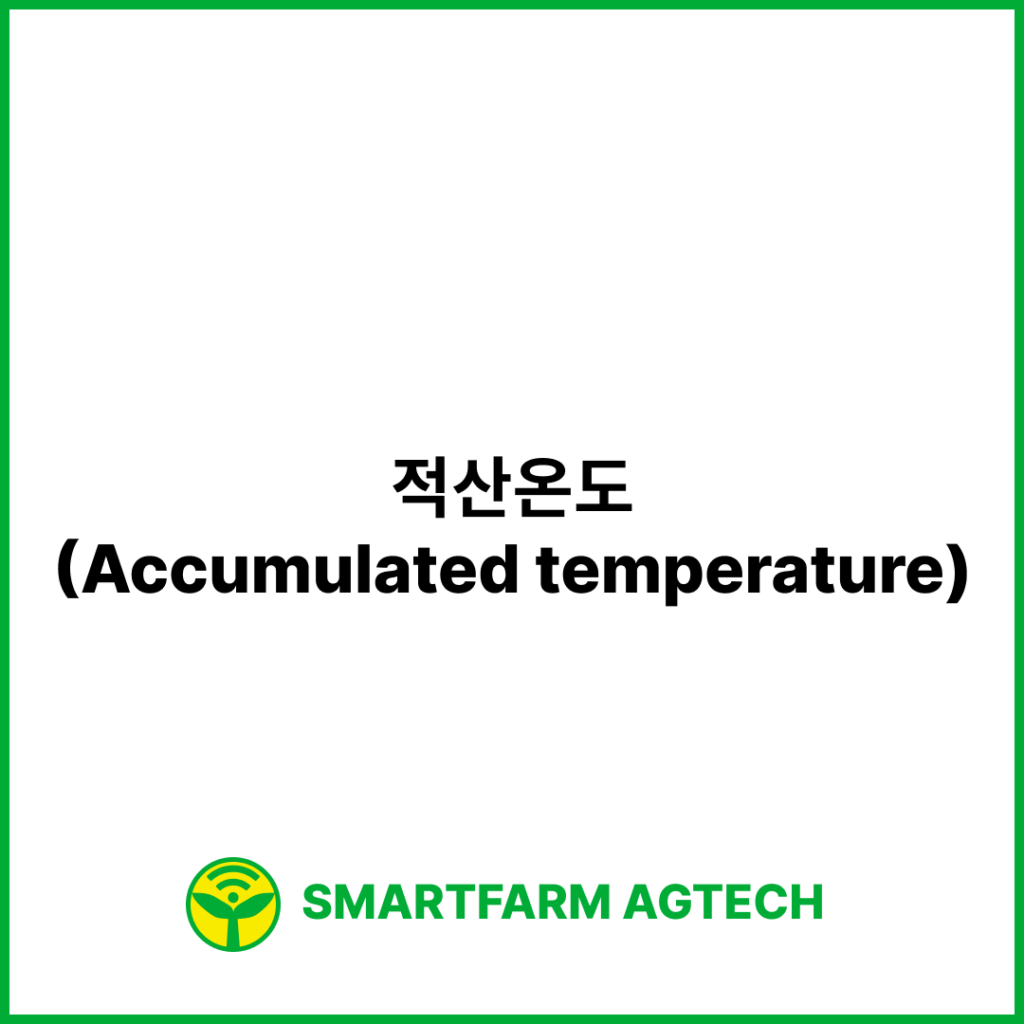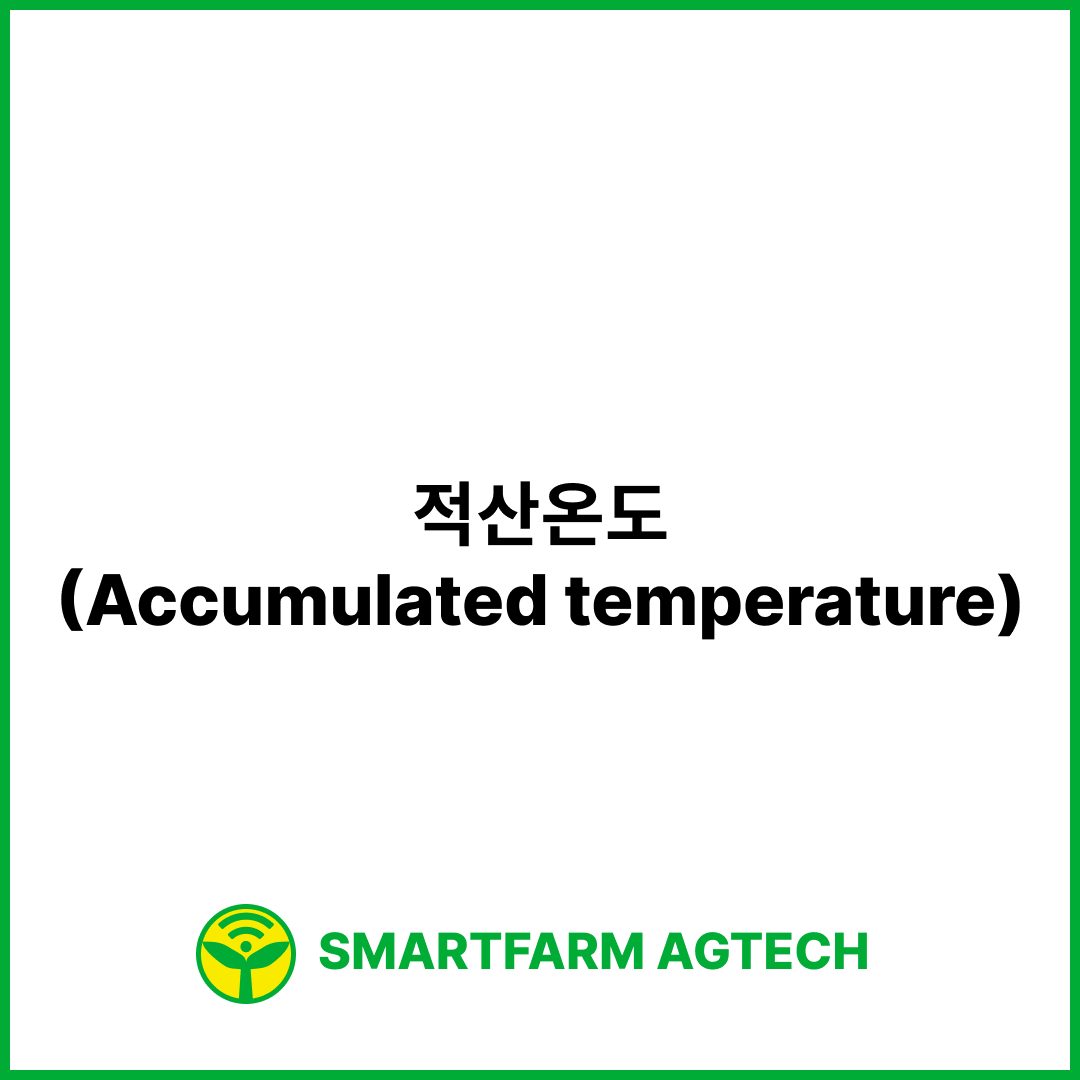적산온도(Accumulated temperature) | 스마트팜피디아 (Smartfarm Pedia)는 스마트농업관리사 혹은 스마트농업전문가라면 알아야 할 내용 중에 하나입니다. 자세한 내용은 아래의 내용을 통해 확인해보시기 바랍니다.
적산온도(Accumulated temperature) | 스마트팜피디아 (Smartfarm Pedia)
적산온도(Accumulated temperature)

“적산온도(Accumulated temperature),” 또는 “누적 온도”는 작물의 성장과 발달에 필요한 열 에너지를 측정하기 위한 스마트팜에서 중요한 개념입니다. 이는 특정 온도 임계값을 초과하는 누적 온도를 계산하는 것으로, 작물의 대사 활동이 발생하기 위해 필요한 최소 온도입니다.
스마트팜 환경에서 적산온도는 일정 기간 동안의 일일 평균 온도를 더하여 계산됩니다. 보통 이 기간은 작물의 성장기간을 의미합니다. 이때 사용되는 임계 온도는 해당 작물의 활동이 활발히 일어나기 시작하는 최저 온도인 “기준 온도” 또는 “임계 온도”로 불립니다.
예를 들어, 기준 온도가 10°C인 작물을 생각해봅시다. 성장 기간 동안의 일일 평균 온도가 15°C라면, 그 날의 적산온도는 5°C (15°C – 10°C)가 될 것입니다. 시간이 지남에 따라 적산온도는 작물의 성장과 발달에 필요한 열 에너지에 대한 정보를 제공하며, 꽃 피우기나 열매 맺기와 같은 특정 발달 단계가 언제 예상되는지를 예측할 수 있습니다.
적산온도는 농부들에게 작물 발달의 진행 상황을 모니터링하고 예측하는 실용적인 방법을 제공합니다. 온도 데이터를 누적하고 작물의 요구 사항과 비교함으로써 농부들은 심기 일정을 최적화하고 관수와 영양 공급을 관리하며, 병충해 방지와 관련된 결정을 내릴 수 있습니다. 이러한 접근 방식을 통해 농부들은 온도 정보를 활용하여 스마트팜 기술을 더욱 효율적으로 활용하고 성공을 이룰 수 있습니다.
Accumulated temperature
“Accumulated temperature,” also known as “degree-days,” is a crucial concept in smart farming used to quantify the heat energy required for the growth and development of crops. It involves calculating the cumulative temperature above a specific threshold temperature, which is the minimum temperature required for the crop’s metabolic activity to occur.
In a smart farming context, accumulated temperature is calculated by summing up the daily average temperatures over a certain period, typically the growing season of the crop. The threshold temperature, often referred to as the “base temperature” or “critical temperature,” is the temperature at which the crop begins to exhibit active growth and development. Temperatures below this threshold are considered insufficient for the crop’s growth processes.
For example, consider a crop that has a base temperature of 10°C. If the daily average temperature during the growing season is 15°C, the accumulated temperature for that day would be 5°C (15°C – 10°C). Over time, the accumulated temperatures give farmers valuable information about the heat energy available for the crop’s growth and help them predict when certain developmental stages, such as flowering or fruiting, are likely to occur.
Accumulated temperature provides farmers with a practical way to monitor and predict the progress of crop development. By accumulating temperature data and comparing it to the crop’s requirements, farmers can optimize planting schedules, manage irrigation and nutrient application, and make informed decisions about pest and disease control measures. This approach allows farmers to leverage temperature information to enhance the efficiency and success of their smart farming practices.
참고)
- 스마트팜피디아 SMARTFARMPEDIA – 바로찾는 스마트팜 용어집 (발간등록번호 11-1543000-003389-0

